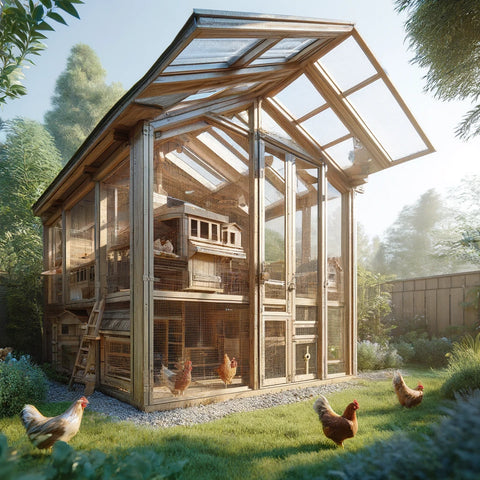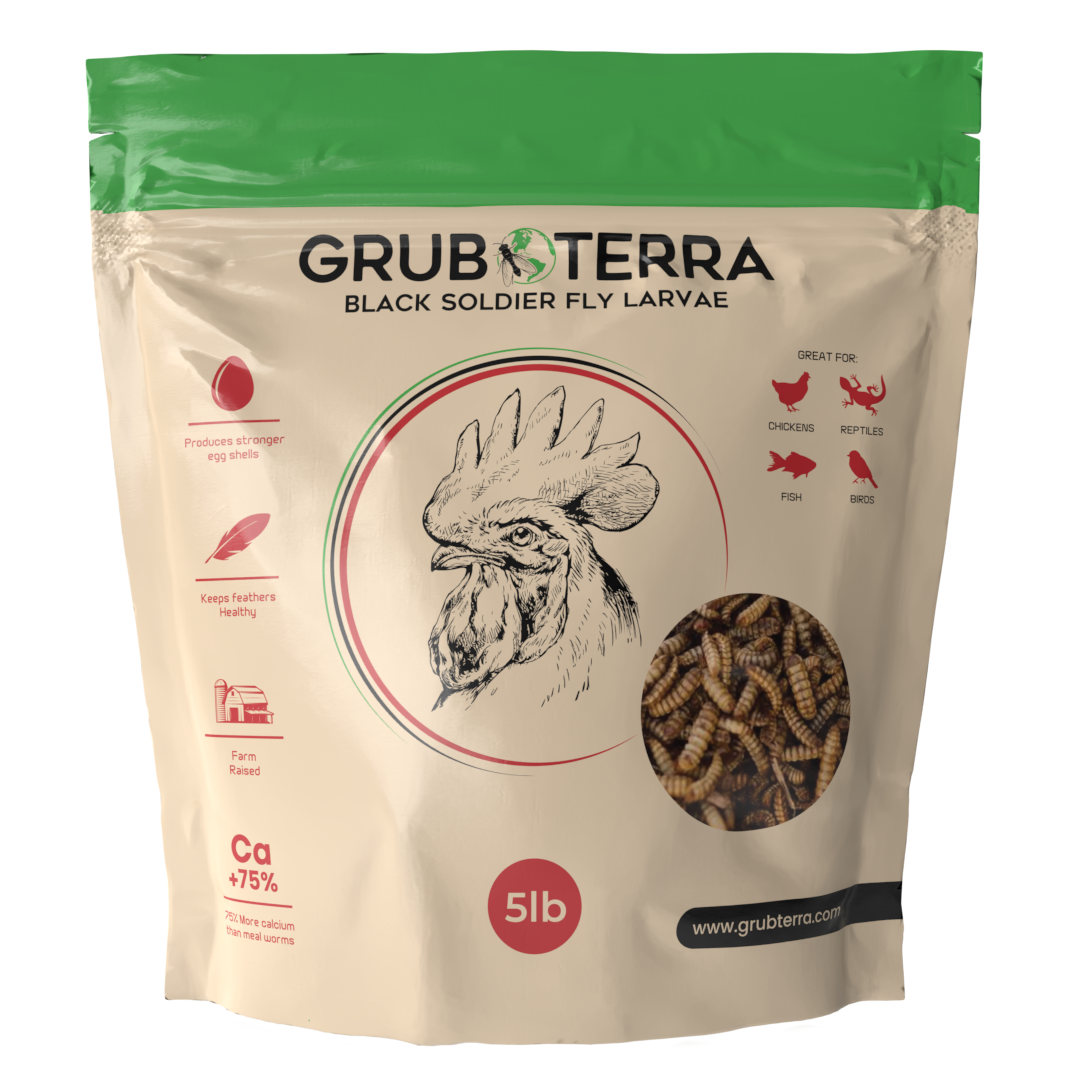Introduction to Chicken Coop Innovations
Why settle for the ordinary when it comes to chicken coops? The well-being of our feathered friends is paramount, and innovative coop designs play a crucial role in ensuring they lead happy and healthy lives. This guide delves into the world of modern coop features, sustainable materials, and the impact of thoughtful design on chicken welfare. By embracing innovation, we can provide environments that not only meet the basic needs of chickens but also enhance their quality of life.
Essential Features of a Modern Chicken Coop
Modern chicken coops, as detailed on GrubTerra’s blog, go beyond just providing shelter. They create a safe, comfortable, and stimulating environment. Features like adequate ventilation, sufficient space, easy access for cleaning, and effective predatory proofing ensure a hygienic and secure living space.
Sustainable Coop Materials and Construction
Sustainability is at the heart of innovative coop design. By choosing eco-friendly building materials and incorporating recycled or upcycled elements, we not only benefit our chickens but also the planet. This section provides practical tips for those interested in DIY coop building, emphasizing the importance of sustainability throughout the construction process.
The Role of Technology in Coop Design
Technology has revolutionized the way we care for chickens. Automated feeding and watering systems ensure consistent nutrition and hydration, while temperature and humidity controls create optimal living conditions. Additionally, security cameras allow for remote monitoring, providing peace of mind to chicken keepers. This chapter explores how technology can be seamlessly integrated into coop design for enhanced care and efficiency.
Innovative Coop Designs for Different Climates
Climate plays a significant role in coop design. This section offers solutions tailored to various weather conditions, ensuring chickens remain comfortable year-round. From insulation techniques for cold weather to ventilation strategies for hot climates, these designs adapt to the needs of your flock, regardless of the season.
Maximizing Space with Vertical Coop Designs
Vertical space utilization is a game-changer in coop design, especially for those with limited ground area. This chapter highlights the benefits of vertical designs, such as increased exercise opportunities and enriched environments for chickens. It also provides examples and tips for incorporating vertical elements into your coop.
Integrating the Coop into Your Garden or Yard
A chicken coop can be more than just a functional space; it can also enhance the beauty and productivity of your garden or yard. This section explores the symbiotic relationship between coops and gardens, highlighting how chickens can contribute to pest control and fertilization. It also offers ideas for designing coops that complement your outdoor aesthetic.
Safety First: Predator-Proofing Your Coop
Protecting your chickens from predators is a top priority. This chapter covers the identification of potential threats and the implementation of structural and natural deterrents. By prioritizing safety, you can create a fortress for your flock that guards against unwanted visitors.
The Importance of Natural Light and Ventilation
Proper lighting and airflow are essential for the health and well-being of chickens. This section emphasizes the importance of designing coops with ample natural light and effective ventilation systems, ensuring a comfortable and disease-free environment.
Coop Maintenance and Hygiene Practices
A clean coop is a happy coop. Regular maintenance and the use of safe, natural disinfectants are crucial for preventing disease. This chapter offers practical advice for designing coops that are easy to clean and maintain, promoting a healthy living space for chickens.
Community and Social Interaction in the Coop
Chickens are social creatures, and their coop design should reflect their need for community and interaction. This section delves into how coop architecture can influence flock dynamics and encourage positive social behaviors. By understanding the social structure of chickens, keepers can design spaces that reduce stress and promote harmony within the flock.
Incorporating Feeding Innovations in Coop Design
Nutrition is a cornerstone of chicken health, and GrubTerra’s Black Soldier Fly Larvae offer optimal nutrition. By integrating efficient feeding zones within the coop, keepers ensure their chickens are well-nourished. Discover the benefits at GrubTerra’s Black Soldier Fly Larvae product page.
Monitoring and Managing the Health of Your Flock
Regular health checks are essential for maintaining a healthy flock. This section covers the signs of distress to watch for in chickens and how technology can be utilized for effective health monitoring. By staying vigilant and proactive, chicken keepers can address health issues promptly and keep their flocks thriving.
Creative Uses of Space and Design
Innovation in coop design isn't just about functionality; it's also about creativity. This chapter showcases multi-functional coop features and space-saving innovations that cater to the unique needs of each flock. From customizable elements to inventive uses of space, these ideas inspire chicken keepers to think outside the traditional coop.
FAQs
How much space do chickens need in a coop?
Chickens require at least 2-3 square feet of space per bird inside the coop and about 8-10 square feet in the run. However, more space is always better for their health and happiness.
What materials are best for building a chicken coop?
Sustainable and durable materials like untreated wood, recycled plastics, and metal can be excellent choices. Eco-friendly options not only support the environment but also ensure the longevity of the coop.
How can I predator-proof my chicken coop?
To protect your flock, ensure the coop is securely enclosed with hardware cloth (not chicken wire), use predator-proof latches, and consider installing motion-activated lights or even electric fencing around the perimeter.
Can technology really improve the well-being of chickens?
Absolutely. Automated systems for feeding, watering, and climate control can significantly enhance the living conditions within the coop, leading to happier, healthier chickens.
What are the benefits of incorporating Black Soldier Fly Larvae into my chickens' diet?
Black Soldier Fly Larvae are a high-protein, nutrient-rich food source that can improve feather health, encourage natural foraging behavior, and contribute to the overall well-being of your chickens. Visit GrubTerra for more information.
How often should I clean my chicken coop?
A thorough cleaning should be done at least once a month, with regular spot cleaning and maintenance as needed. Keeping the coop clean is essential for preventing disease and ensuring a healthy environment for your flock.
Conclusion: Building a Better Future for Chickens
Innovative coop designs are a significant step forward in the way we care for chickens. By focusing on sustainability, technology, and the well-being of the flock, chicken keepers can create environments that promote health and productivity. Engage with a community of like-minded individuals and find additional resources at GrubTerra.
By incorporating these links into the content, readers can easily access GrubTerra's valuable resources, ensuring they have the information needed to create the best possible environment for their chickens.


